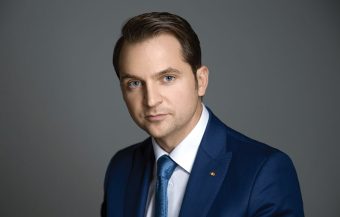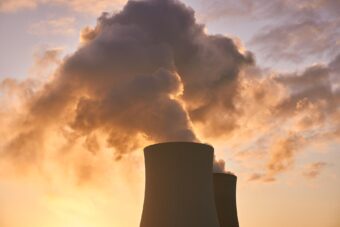
Romania is among the countries with a diverse and balanced energy mix, with a strong reliance on hydropower, efficient nuclear reactors, and wind farms, while coal and natural gas are also present in the energy composition. As a member of the European Union, Romania prioritizes climate neutrality, energy stability, and environmental preservation. Environmental protection, one of the main concerns of the EU, is often inseparable from energy issues. Romania can also take pride in this area, as it is interwoven with vast protected areas and the longest sections of the Carpathian Mountains, making the preservation of its natural resources a significant task.
As much as 30,000 hectares are under UNESCO protection, while the country boasts over 70,000 hectares of old-growth forests. The Danube is an indispensable element in the story of the country’s natural wealth and developed energy sector, as it powers local hydroelectric plants, with more than one-third of the river situated within Romanian territory, stretching over 1,000 kilometers. Regarding nuclear energy, our interlocutor, Sebastian Burduja, Romania’s Minister of Energy, shared more about Romania’s energy plans, including nuclear energy. This is of particular interest as Serbia is gradually turning its attention to nuclear, and examining how everything is progressing, especially in neighboring countries.
IN FOCUS:
- Sustainable Banking for a Secure Future
- From Key Projects To Future Strategies
- How Plants Clean the Environment from Harmful Substances
Q: Can you present Romania’s energy mix? How significant are coal and gas in Romania’s energy sector, and are there plans to reduce their usage?
A: Romania’s current energy mix relies on a diverse range of resources, with a focus on renewable energy sources, natural gas in combination with hydrogen, and nuclear energy. Romania is on the path to decarbonizing its economy, aiming to achieve key energy and climate goals by 2030, as outlined in the National Energy and Climate Plan (NECP) and the National Recovery and Resilience Plan (NRRP). Therefore, we are working intensively on the electrification process, dismantling outdated coal-fired power plants, increasing the share of energy from renewable sources, and improving energy efficiency. To support these plans, Romania has taken several concrete steps. First and foremost, the gradual phase-out of coal by 2032 plays a crucial role in achieving climate goals, accompanied by the parallel development of low-carbon energy production capacities and, of course, the necessary supporting infrastructure. The National Recovery and Resilience Plan foresees investments in new production capacities amounting to 950 MW of electricity from renewable sources, primarily solar and wind energy, with an available budget of 460 million euros. In addition, through the Modernization Fund, the construction of an additional 10 GW of wind and solar energy is planned by the end of 2030. To facilitate private investments in renewable energy sources, our Ministry of Energy has introduced Contracts for Difference (CfD), which will ensure long-term predictable revenues for new energy producers, while simultaneously contributing to reducing market prices by increasing the amount of energy in circulation. We can say that CfDs are a tool used in this case to encourage investments in renewable energy sources. They allow renewable energy producers to receive a fixed price for the electricity they generate, independent of current market price fluctuations. In this way, the producer has revenue stability, which makes it easier for them to plan ahead and invest in new projects.
Q: What major renewable energy projects are planned for the upcoming period?
A: Romania aims to increase the share of renewable energy in its energy mix, with the goal of having at least 38.3 percent of total energy consumption come from renewable sources by 2030. One of Romania’s most ambitious plans is to become, by the end of this decade, the first country on the Black Sea with offshore wind energy production facilities. This is a significant project that can harness the sea’s potential which has not been utilized so far. The country’s energy priorities are focused on new investments that will increase the contribution of renewable energy sources to the energy mix, including harnessing the renewable energy potential of the Black Sea, large-scale electricity storage, and the use of hydrogen.

Q: When did Romania start using nuclear energy, and can you provide an overview of its current state?
A: Last year, at COP28, more than 20 countries across four continents signed a joint declaration aimed at tripling global nuclear energy production by 2050. In the European Union, nuclear energy currently covers approximately one-quarter of total electricity production, with around 100 operational reactors. Additionally, more than 35 new reactors are either planned or already under construction. The Net Zero Industrial Act in the European Union also recognizes the importance of nuclear energy in reducing emissions and, therefore, facilitates the implementation of nuclear projects through financial mechanisms that reduce risk and enable stable revenues, such as Contracts for Difference (CfD) or Power Purchase Agreements (PPA). Nuclear energy and renewable energy sources are positioned quite evenly when discussing climate goals for 2040. As for Romania, it represents a unique example in Europe, as in the 1970s it decided to develop a nuclear program based on Western technology, making it the only country from the former Soviet bloc to choose CANDU technology (Canadian Deuterium Uranium). The Cernavoda Nuclear Power Plant, with its two units, provides continuous and clean energy to Romania, meeting about 20 percent of its energy needs. These are among the most efficient reactors in the world, which is why Romania continues to develop its nuclear capacity through the planned construction of the third and fourth units at the Cernavoda site, with their commissioning expected by 2031. Furthermore, Romania is committed to nuclear innovation through the development of small modular reactors (SMR), particularly in regions facing the gradual phase-out of coal. SMR technology offers numerous advantages, including lower costs, shorter construction timelines, and, ultimately, greater efficiency. Nuclear waste management remains a key issue in the nuclear program. Romania, like other countries with developed nuclear infrastructure, directs significant funds and expertise towards the safe disposal of nuclear waste, which is why international cooperation in this field is essential for the sustainability of nuclear energy in the future.
Interview by Milica Vučković
Read the whole interview in the new issue of the Energy portal Magazine ENERGY TRANSITION

